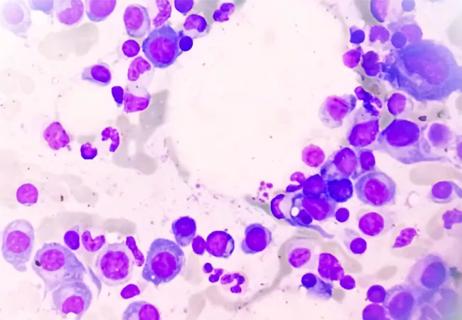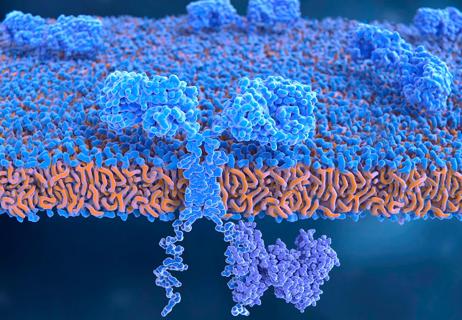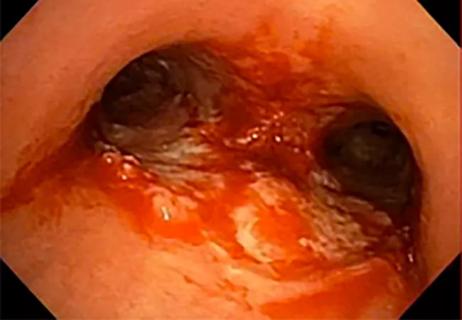Technology has therapeutic, diagnostic advantages

Nanotechnology is being used to overcome some of the drawbacks to oral and intravenous cancer therapies. Next-generation nanoparticles combine diagnostic and therapeutic applications, termed theranostics, a platform that allows for a deeper understanding of the behavior of nanoparticles in vivo.
Advertisement
Cleveland Clinic is a non-profit academic medical center. Advertising on our site helps support our mission. We do not endorse non-Cleveland Clinic products or services. Policy
Nanoparticles are submicroscopic particles with dimensions of approximately 100 to 300 nanometers (one billionth of one meter). “At the nanoscale, the physical, chemical and biological properties of materials differ,” says Vinod Labhasetwar, PhD, Director of Cleveland Clinic’s Cancer NanoMedicine Program and Professor in Lerner Research Institute’s Department of Biomedical Engineering. Exploiting these nanoscale properties can lead to enhanced delivery methods of therapeutics in oncology and other specialties.

Delivery issues hinder the administration of many anti-cancer drugs. “Either they are toxic to normal cells, are not stable in the body or clear quickly, or bind to unwanted tissue to cause serious organ failure,” he says. For example, doxorubicin, the most commonly used drug for treating breast cancer, has an affinity for cardiac tissue, affecting heart function.
Many promising anti-cancer molecules have been discarded from further investigation because they could not be delivered efficiently. Recombinant proteins and peptides can be highly unstable, or the new drug molecules may prove to be highly insoluble, resulting in poor absorption. Or they may not lend themselves to a form suitable for injection.
Nanotechnology can overcome the lack of tumor selectivity and facilitate drug delivery by changing a drug’s characteristics, such as its biodistribution capabilities. Nanoparticles can deliver encapsulated substances to target tumor tissue and release them over time. In the case of doxorubicin, encapsulating it in lipid-based nanoparticles, which are modified with hydrophilic polymers, can prevent its uptake by the heart. In addition to selective cell targeting, nanoparticles can be engineered to improve a drug’s stability and bioavailability.
Advertisement
Targeted drug delivery can be accomplished through nanotechnology via two mechanisms. One — passive targeting — is based on a phenomenon termed the enhanced permeability and retention (EPR) effect. That is the property by which nanoparticles have an enhanced affinity for tumor tissue relative to normal tissue, explains Dr. Labhasetwar.
Tumor tissue is “hypervascular,” so injected nanoparticles can selectively extravasate in tumor tissue through its leaky vasculature. Drug concentration in tumors can be vastly greater than in other tissues, and an effective concentration can be maintained in the tumor for a prolonged period, potentially promoting tumor regression while reducing the frequency of administration. A high intratumor concentration of an anti-cancer drug also is important to thwart the development of resistance and disease relapse.
The second mechanism for targeting drug delivery to the tumor, called “active targeting,” involves designing nanoparticles that bind specifically to receptors that are overexpressed on tumor cells. Peptide- and antibody-targeted nanoparticles are examples of active targeting to improve anti-cancer drug delivery to tumors.
The ability to deliver a combination of drugs with synergistic activity is another beneficial property of nanotechnology, which again may allow reduced doses of some cancer treatments. Tumor cells are more sensitive to heat than are normal cells. So nanoparticles that can generate localized heat in response to an external source of energy (such as iron oxide or gold nanoparticles exposed to a magnetic field or laser light) are being studied to enhance the efficacy of drugs and drug combinations, especially for localized cancers.
Advertisement
A challenge lies in demonstrating biocompatibility of novel nanomaterials to gain approval from the Food and Drug Administration. At present, more than 40 products based on nanotechnology are on the market and more than 100 are in clinical development, largely for cancer therapies, says Dr. Labhasetwar. “We are developing confidence that they can be used safely and effectively,” he says.

Cleveland Clinic’s Department of Urology in the Glickman Urological & Kidney Institute, in collaboration with Dr. Labhasetwar’s laboratory, is working to develop nanoparticle delivery systems for use in metastatic testicular cancer. The laboratory of Edmund Sabanegh Jr., MD, Chair of the Department of Urology, is focusing on creating cisplatin-loaded nanoparticles for the treatment of testicular cancer in a mouse model. “The testes are considered immune-privileged sites, and the blood-testis barrier is difficult to penetrate, making it more difficult to treat conditions that affect the testis,” he says.
At present, high systemic concentrations of chemotherapeutic drugs are required to achieve sufficiently high intratesticular concentrations, increasing the risk of toxicity. Directly injecting the testis could cause trauma and disrupt the blood-testis barrier.
“As step one of a targeted approach to treatment, we have been able to identify a small-enough particle that can get by the blood-testis barrier,” says Dr. Sabanegh. “Step two is engineering a molecule that actively seeks out the testis. Because the testis binds follicle-stimulating hormone (FSH), a molecule that binds preferentially to FSH would allow active targeting of the testis. The nice thing about nanoparticles is that we can engineer their size affinities and the drugs they carry.”
Advertisement

Dr. Labhasetwar’s laboratory is exploring the characteristics of lipid changes in cancer cells, particularly their biophysical characteristics, with the goal of better understanding drug resistance, tumor progression and tumor metastasis. This includes investigating surface-engineered nanoparticles that would preferentially interact with the membrane lipids of malignant but not normal cells.
“It’s a different approach than using antibodies and other targeting ligands,” Dr. Labhasetwar says. “We know that tumors have different lipid composition and biophysical properties than normal cells, and we have shown that the lipids of a drug-resistant cell are different than those of sensitive cells. We are working to use this knowledge to develop therapies that can overcome drug resistance.
Epigenetic changes in cells have been implicated in tumor initiation, drug resistance and tumor metastasis. Delivery of epigenetics-based therapeutics, such as DNA demethylating agents, may be more efficient using nanoparticles, and this strategy has shown promise in inhibiting tumor metastasis in animal models, says Dr. Labhasetwar.
Next-generation nanoparticles integrate an imaging component so that the effect of the drug-loaded nanoparticles can be assessed after they are delivered. Among imaging mechanisms, much research has been devoted to magnetic particles as contrast agents in magnetic resonance imaging (MRI). One example is the magnetic theranostic particle iron oxide, which can be imaged with MRI. Surface modification of iron oxide nanoparticles may permit their therapeutic application along with their diagnostic capability. Similarly, gold nanoparticles are being explored.
Advertisement
“The idea is we’ll be able to make sure that the drug is penetrating the tumor,” says Dr. Labhasetwar. “We should also be able to monitor whether the tumor is shrinking. We assume that EPR is an effective targeting mechanism, but unless we see it in a clinical scenario, we won’t know how much drug is delivered.”
Another application of nanoparticles with imaging capability, particularly for optical imaging, is their use in defining the tumor periphery. Often it is difficult to distinguish the tumor periphery during surgical removal. By injecting an imaging agent, which accumulates in the tumor and illuminates upon exposure to light, the surgeon can visualize the tumor’s true borders.
An innovative partnership between Cleveland Clinic and The Hebrew University of Jerusalem to create a global Center for Transformative Nanomedicine has the potential to impact patients around the world by taking a bold new approach to the delivery of novel therapies and treatments.
By harnessing the power of nanoscience and nanotechnology, this collaboration will blaze new research paths, especially in the areas of cardiovascular disease, neurological disease and cancer, by creating novel drug delivery systems and unique medical technologies with lifesaving potential.
Cleveland Clinic is a leader in laboratory-based, translational and clinical research, while The Hebrew University of Jerusalem is top-ranked in biotechnology, nanotechnology, molecular modeling and drug development. By combining resources and sharing scientific knowledge, the Center for Transformative Nanomedicine will translate scientific discoveries into practical applications to prevent, diagnose and treat illness.
Advertisement

Consult program a valuable tool that benefits both patients and clinicians

Additional fine-tuning and recruiting of new patient groups underway

Driving advances in cancer care

Patient able to avoid surgery and radiation despite having rapidly growing mass

Minimal residual disease testing shows promising results

Immune therapy and targeted therapies have led to durable responses and potential cures

A brief look at our programs

The role of interventional pulmonology in cancer care